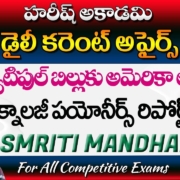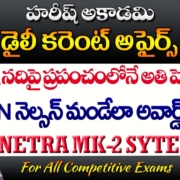Reflections on PM Modi’s 15 August 2025 Independence Day Speech
Introduction
On 15 August 2025, Prime Minister Narendra Modi addressed the nation from the Red Fort in New Delhi—the mark of his 12th consecutive Independence Day speech. At 103 minutes, it became the longest I-Day address in Indian history, surpassing his own 2024 record
1. A Record-Breaking Address with Grand Ambitions
The lengthy duration signaled a wide-ranging agenda and an energy-packed oration. Central to the speech was the familiar refrain of ‘Aatmanirbhar Bharat’ (self-reliant India), woven through themes of economic independence, technological prowess, and national security. From an educational standpoint, HAREESH THE BEST ACADEMY applauds the vision
2. Bold Strategic and Security Commitments
Modi issued a stern warning to Pakistan, affirming that “blood and water cannot flow together,” referring to India’s response to the Pahalgam terrorist attack and the suspension of the Indus Waters Treaty He unveiled Mission Sudarshan Chakra, tasked with building a modernized national security shield by 2035 demonstrating intent to bolster defence preparedness.
3. Economic Empowerment and “Diwali Gift” GST Reforms
Modi announced “next-generation” GST reforms by Diwali aimed at reducing the tax burden on daily-use items—a promise he referred to as a festive gift to citizens Immediate economic steps included launching the Pradhan Mantri Viksit Bharat Rojgar Yojana to incentivize jobs for fresh graduates, offering ₹15,000 per person to both job seekers and private employers
4. Technological & Sustainable Development on Ascendancy
Modi heralded the imminent release of “Made-in-India” semiconductor chips by year-end and approved the setup of six manufacturing units—four already with the nod—signaling a serious shift in India’s tech ambitions Additionally, he stressed energy independence with announcements in solar, hydrogen, nuclear, and space sectors, noting India had already exceeded its 50% clean-energy target for 2030 by 2025 Self-reliance in critical minerals like lithium and cobalt also featured prominently
5. Social Harmony, Inclusivity, and Progress
Despite his ideological leanings, Modi highlighted unity, celebrating India’s linguistic and cultural diversity. He urged citizens to embrace all regional languages and stressed the role of women, youth, and farmers in building “Viksit Bharat by 2047” . He acknowledged contributions to social welfare schemes like Digital India, Ayushman Bharat, and environmental initiatives
6. Praise for RSS and Pushback from Opposition
A notable and contentious highlight of the speech was Modi’s tribute to the Rashtriya Swayamsevak Sangh (RSS), stating the organization continues to inspire the nation even after a century . Opposition leaders, including Asaduddin Owaisi and others, strongly criticized this, calling it “an insult to the freedom struggle” and claiming it undermines inclusive values
7. Underlying Mood: Projection or Preservation?
Analysts observed that Modi’s expansive rhetoric may signal a leader responding to growing domestic dissent and global challenges. Some saw the speech as more about self-preservation than bold vision, suggesting the tone hinted at vulnerability rather than dominance
Final Thoughts from HAREESH THE BEST ACADEMY
This article in the rmconnection must have given you clear idea about PM Modi’s 15 August 2025 speech was undeniably ambitious, wide-ranging, and historic in length. It delivered on strategy, with clear emphasis on self-reliance, economic relief, technological resurgence, and national security enhancements. For the aspirational Indian, it offered many motivating elements—the promise of jobs, clean energy, tech independence, and a call for unity.
Yet, the praise for RSS and the strong tone on demographic threats and security stirred debate about the tone of inclusion that is often expected on such occasions. The polarized reactions remind us of the fragile balance between national ambition and pluralistic ideals.
From an educational standpoint, HAREESH THE BEST ACADEMY applauds the vision of a Viksit Bharat 2047, but hopes future narratives weave in broader collaboration, diverse contributions, and balanced patriotism. Only by embracing all Indians—regardless of ideology—can the dream of a truly united, developed nation be realized.











Leave a Reply
Want to join the discussion?Feel free to contribute!